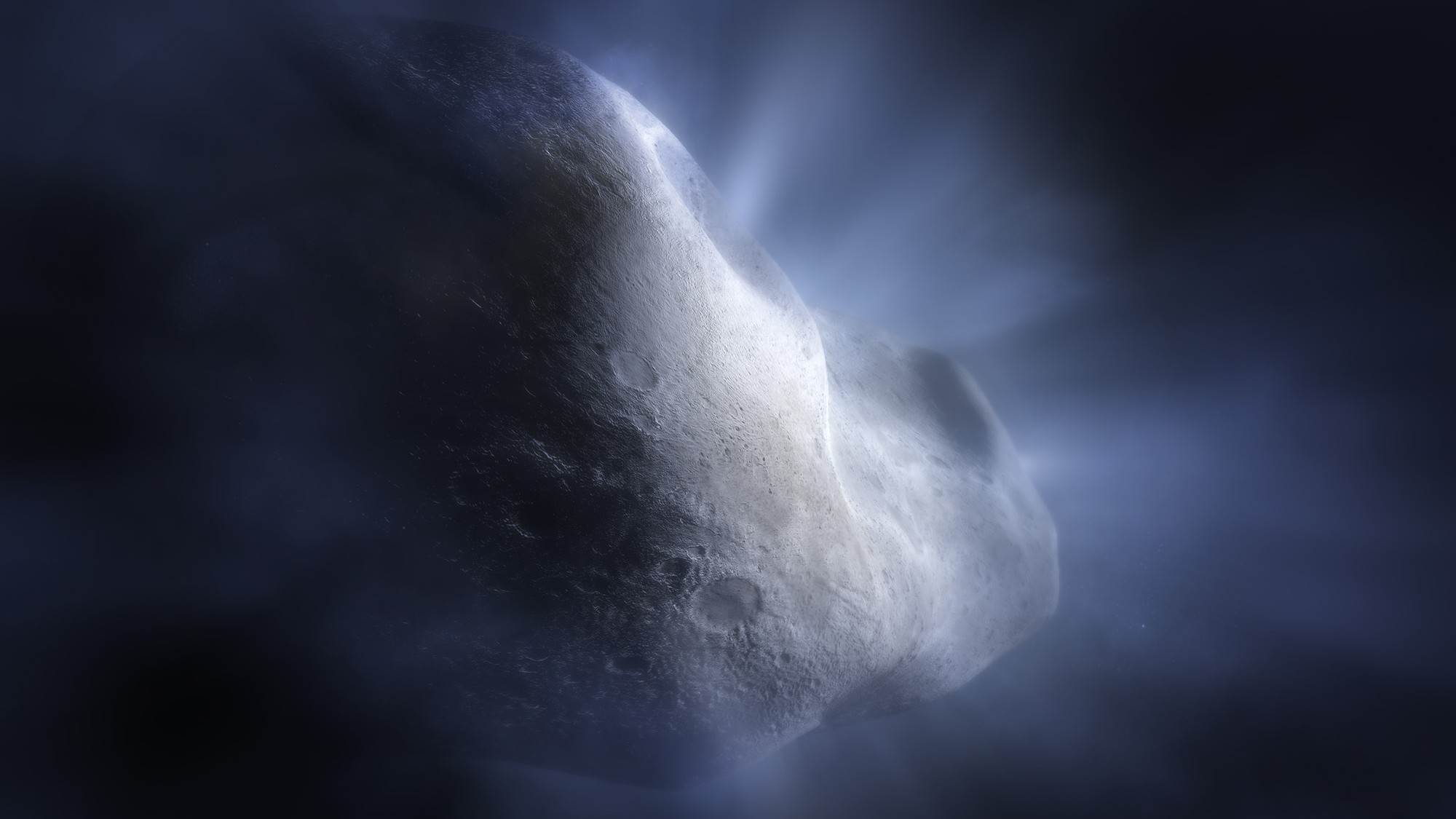James Webb telescope spots ancient water frozen in a near-Earth comet — and scientists want to collect it
A new analysis of a comet in the asteroid belt reveals frozen water from the early solar system, hinting at the origins of water on Earth.

NASA's James Webb Space Telescope (JWST) is probably best known for peering deep into the early cosmos, searching for the universe's oldest stars. But it's also making amazing discoveries right in our own cosmic backyard.
For the first time, the powerful telescope has spotted a water-rich comet in the inner solar system, NASA recently announced. The finding may help to solve the long-held mystery of how Earth got its water, the research team said in a study published May 15 in the journal Nature.
Dubbed Comet Read, the object is surrounded by a haze of gas and dust called a halo. When the JWST analyzed this halo using a specialized near-infrared instrument that detects heat, it found that the gas was composed largely of water vapor, implying that the comet's heart likely contains frozen water from the early solar system, potentially originating 4.5 billion years ago. But weirdly, the halo contained virtually no carbon dioxide, a major ingredient in most known comets.
Related: 35 Jaw-dropping James Webb Space Telescope images
Comet Read is what's known as a main belt comet. These rare objects reside inside the asteroid belt between Mars and Jupiter. Like regular comets, they are thought to contain ices made up of a wide variety of elements. But unlike most comets, they are only periodically surrounded by a gaseous halo and tail.
Scientists have detected frozen water inside comets in the far reaches of the solar system, including in the Kuiper Belt and the Oort cloud, located beyond the orbit of Neptune, several trillion miles from Earth. In these regions, heat from the sun isn't strong enough to vaporize the volatile elements that give comets their tails. But the Comet Read discovery confirms that water ice from the early solar system can be preserved much, much closer to the sun — a fact that astronomers had long predicted but never proved.
Comet Read's missing carbon dioxide, however, presents a bigger mystery. It could be that Read, for some reason, simply formed without any CO2. Or it's possible that it had carbon dioxide early in its life but that the volatile compound burned away over time due to the sun's heat.
Sign up for the Live Science daily newsletter now
Get the world’s most fascinating discoveries delivered straight to your inbox.
"Being in the asteroid belt for a long time could do it — carbon dioxide vaporizes more easily than water ice, and could percolate out over billions of years," Michael Kelley, an astronomer at the University of Maryland and lead author of the study, said in a statement.
This discovery offers another clue in the quest to solve where Earth's plentiful water came from; scientists have long theorized that bombardment from icy comets may have been instrumental in giving Earth its first liquid water billions of years ago, though the question is far from settled.
According to the researchers, the next step would be to send a probe to the asteroid belt in hopes of collecting physical samples from Comet Read and other main belt comets like it. This could help scientists figure out how water becomes distributed throughout star systems, laying the groundwork for life as we know it.

Joanna Thompson is a science journalist and runner based in New York. She holds a B.S. in Zoology and a B.A. in Creative Writing from North Carolina State University, as well as a Master's in Science Journalism from NYU's Science, Health and Environmental Reporting Program. Find more of her work in Scientific American, The Daily Beast, Atlas Obscura or Audubon Magazine.









